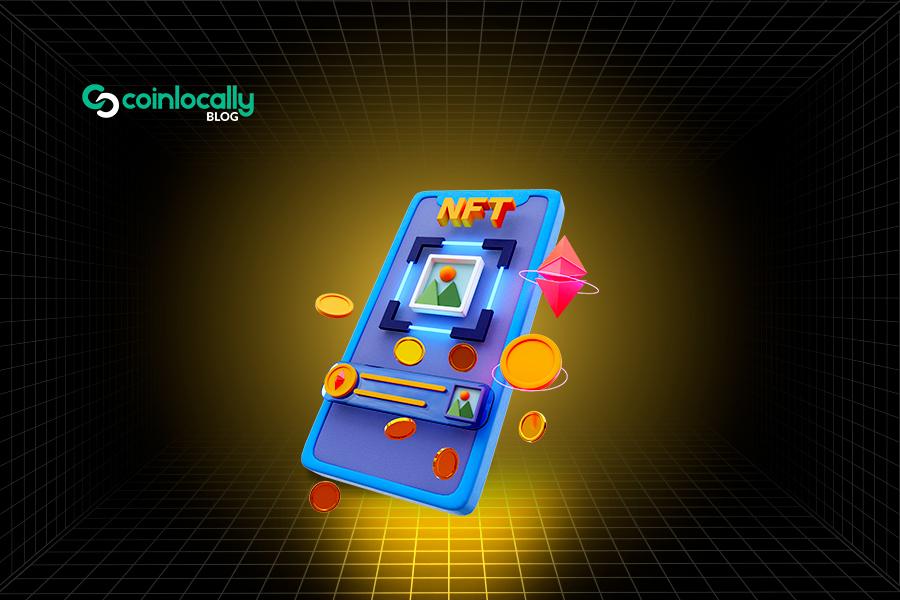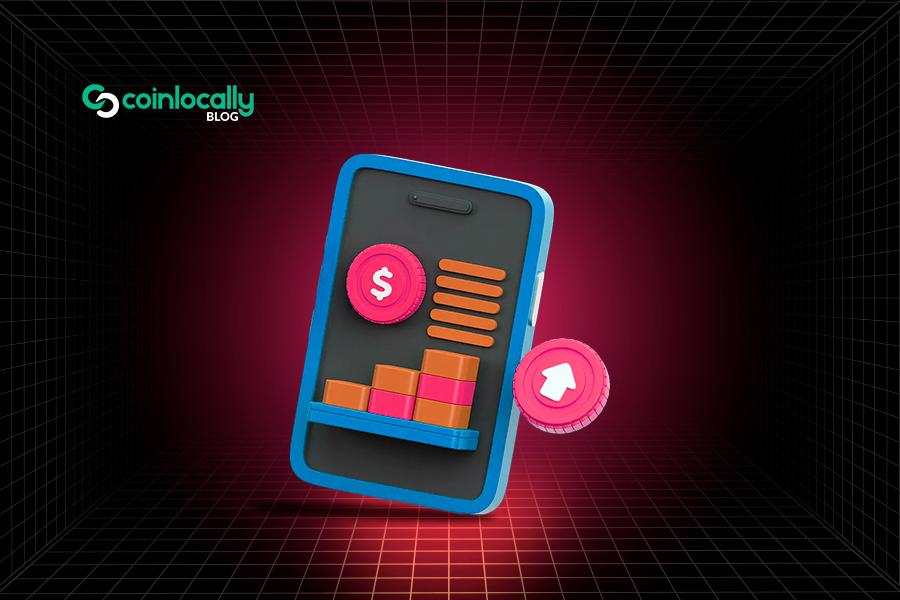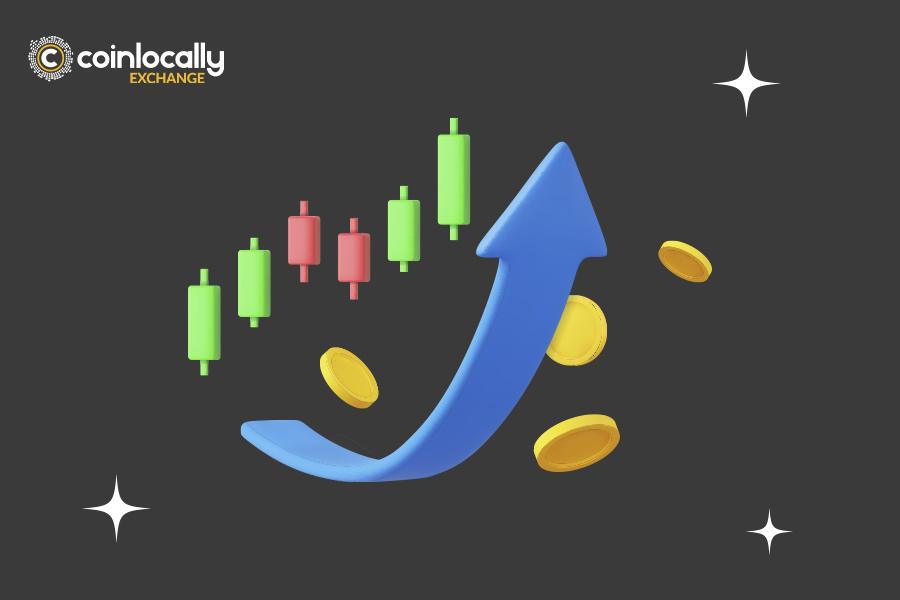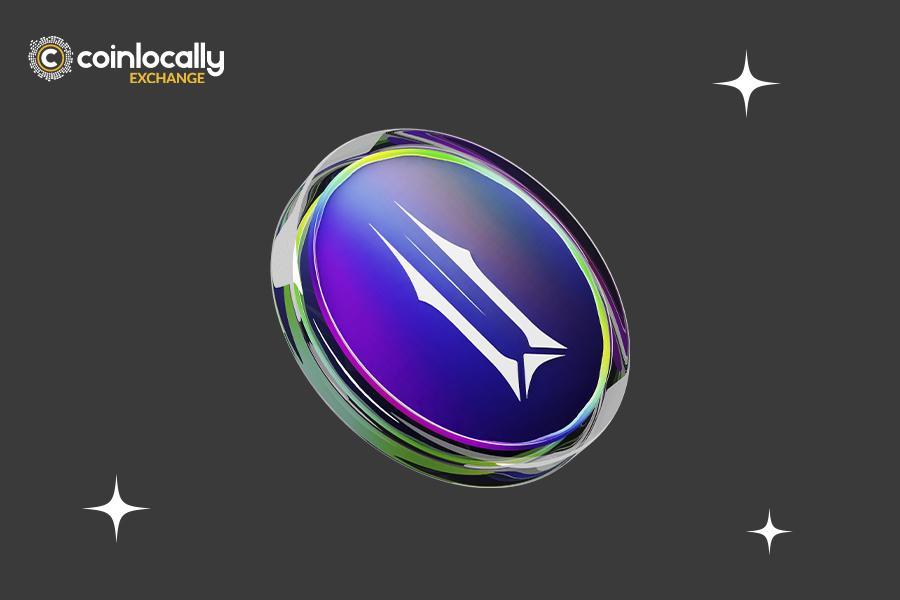NFT staking allows holders of non-fungible tokens (NFTs) to earn passive income while maintaining their assets. But with so many platforms available, how do you choose the best one for staking your NFTs? Let’s review the pros and cons of the top 10 NFT staking platforms to handpick the best options.
Table of Contents
What Does Staking Mean in NFT?
NFT staking means locking up your NFTs on a platform to earn rewards through cryptocurrency or other tokens.
Unlike traditional staking, which uses fungible tokens, NFT staking adds utility to digital collectibles, allowing owners to monetize their assets without selling them.
How Does NFT Staking Work?
When you stake your NFTs, you deposit them into a smart contract on a platform that supports NFT staking. The platform uses your NFTs to participate in the network or provide liquidity.
In return, you earn rewards, which are calculated based on the rarity and value of the staked NFTs. NFT staking can have different benefits.
The Benefits of NFT Staking
By staking NFTs, you can enjoy the following benefits:
- You can earn rewards without selling your NFTs.
- Staking adds functional value to NFTs.
- NFT staking is another way to grow your crypto portfolio.
- By staking NFTs, you can participate in platform governance or rewards.
Despite these benefits, staking NFTs can involve some risks.
The Risks of NFT Staking
Although staking NFTs on reputable platforms is generally safe, there might be the following risks:
- Smart contract bugs or exploits can lead to the loss of assets.
- Market volatility can cause shifts in NFT values and rewards.
- NFTs have different lock-in periods, during which assets may be inaccessible for a fixed period.
- Some platforms may not be secure or reliable.
In addition to considering the risks involved, you must consider the following factors before investing in NFTs.
Factors to Consider Before NFT Staking
To choose a suitable NFT staking platform, it is essential to consider the following key points.
- Compare reward rates and Annual Percentage Yields (APYs) among different NFT platforms.
- Check for transaction or staking fees and choose platforms that charge lower fees.
- Verify the platform’s security and user reviews. Platforms with a stronger user base are more reliable.
- Ensure the platform supports your NFTs.
- Choose platforms with high community support: Platforms with active communities typically offer more robust features.
Considering these factors, we have compiled a list of the top 10 platforms for NFT staking to save you time.
10 Best Platforms for NFT Staking
The following platforms are among the top 10 networks offering various features and competitive APYs for NFT staking.
- Binance NFT
- Rarible
- Splinterlands
- Aavegotchi
- NFTX
- Axie Infinity
- Kira Network
- Polygon Miden
- NFTFi
- Yield Guild Games
Platform 1: Binance NFT
Binance NFT is a prominent NFT marketplace within the Binance ecosystem. It offers staking options for select NFTs. Its reliability, liquidity, and user-friendly features make it a popular platform among NFT enthusiasts.
| Pros | Cons |
| High APYs for premium NFTs, integrated with the Binance ecosystem and products Reliable and secure |
Limited collections supported Staking fees apply No advanced analytics tools Complex setup for beginners |
Binance supports NFTs on both the Binance Smart Chain and Ethereum, and charges a 2% transaction fee per stake. Depending on the NFT collection, it offers an APY of up to 15% to 20n %.
Binance NFT has received positive reviews and high ratings on listing platforms, with an average rating of 4.5/5 on Google and 4.4/5 on Trustpilot.
Platform 2: Rarible
Rarible is a reliable platform that offers different features for decentralized NFT staking. It supports Ethereum and Polygon blockchains and charges gas fees based on the network used.
Based on user activity, it provides APYs ranging from 8% to 12%. The service has garnered positive reviews and ranks highly on various listing platforms, including ratings of 4.3 out of 5 on Google and 4.2 out of 5 on G2.
| Pros | Cons |
| Fully decentralized Supports a wide range of NFTs Easy-to-use interface |
High gas fees for Ethereum Limited staking rewards Lower APYs than others |
Platform 3: Splinterlands
Splinterlands is a blockchain-based trading card game that allows players to stake their in-game NFTs for rewards. It combines gaming with staking, creating an enjoyable experience for its users.
| Pros | Cons |
| Game-based NFT staking Rewards based on game activity Easy to use for gamers |
Limited to gaming NFTs Lower staking flexibility Complex for non-gamers |
Splinterlands exclusively focuses on game NFTs and charges minimal fees for staking through the in-game economy. Its APY varies depending on in-game performance but is usually between 5% and 15%.
Numerous users have recommended this platform and given it positive reviews. It is rated 4.4/5 on Google and 4.6/5 on GameFi Listings.
Platform 4: Aavegotchi
Aavegotchi is a gamified DeFi platform that combines non-fungible tokens (NFTs) with staking. Users can stake their Aavegotchi NFTs and earn rewards based on rarity and performance.
| Pros | Cons |
| Gamified staking experience High rewards for rare NFTs Active community |
Niche use case for gamers Limited NFT collections Requires a significant time commitment |
Aavegotchi is integrated with Polygon, which helps keep transaction fees low due to reduced gas costs. The annual percentage yield (APY) typically ranges from 10% to 20%, depending on the rarity of the NFT.
User ratings for Aavegotchi are positive, with scores of 4.5 out of 5 on Google and 4.6 out of 5 on Crypto Rankings, reflecting favorable reviews and feedback on the platform’s performance.
Platform 5: NFTX
NFTX enables users to create and trade NFT index funds while staking NFTs to earn rewards. It offers liquidity to NFT holders by turning NFTs into fungible tokens.
| Pros | Cons |
| Liquidity-focused platform Supports NFT fractionalization Offers fungibility for NFTs |
Higher fees than competitors Limited supported blockchains Complex setup process |
One of NFTX’s strengths is its compatibility and collaboration with Ethereum. Its transaction fees and gas costs vary depending on the network. It offers an APY that ranges from 7% to 15%, depending on NFT liquidity pools.
Users have rated NFTX highly on different listing platforms. For example, its average rating is 4.2/5 on Google and 4.3/5 on Trustpilot.
Platform 6: Axie Infinity
Axie Infinity is a play-to-earn blockchain game where users can stake their Axie NFTs to earn rewards based on in-game performance and rarity.
| Pros | Cons |
| Strong community High rewards for active players Gamified staking model |
High entry costs Rewards depend on gameplay Limited to Axie NFTs |
Axie Infinity operates on the Ronin Network, which is an Ethereum sidechain. As a result, it offers minimal transaction fees. Furthermore, its annual percentage yield (APY) varies between 12% and 25%, depending on in-game activities.
It has positive user ratings on various listing platforms, with 4.6/5 on Google and 4.7/5 on Blockchain Game Rankings.
Platform 7: Kira Network
Kira Network is a decentralized staking platform that supports NFTs and other tokens, providing a multi-asset staking experience.
| Pros | Cons |
| Multi-asset staking High network security Decentralized and transparent |
Limited NFT collections APYs lower for basic NFTs Requires technical knowledge |
The best thing about this platform is that it charges small transaction fees. Its APY ranges from 5% to 10%, depending on the staked NFT or token. Its user ratings on famous listing platforms are above 4, for example, 4.2/5 on Google and 4.3/5 on Crypto Comparisons.
Platform 8: Polygon Miden
Polygon Miden is an Ethereum Layer 2 scaling solution that supports NFT staking with low fees and high efficiency.
| Pros | Cons |
| Low gas fees High scalability Supports multiple NFTs |
Still in the development phase Limited platform partnerships Lower APY than competitors |
It is built on the Polygon network and charges minimal fees due to low gas costs. Its APY ranges from 5% to 12%, depending on staking activity. Its user ratings on Google and Polygon Ecosystem Rankings are 4.4/5 and 4.5/5, respectively.
Platform 9: NFTFi
NFTFi is a peer-to-peer lending platform where users can use their NFTs as collateral to earn interest or take loans.
| Pros | Cons |
| Staking with collateral options Flexible lending features Supports a variety of NFTs |
High risks for borrowers Complex for beginners Relatively high fees |
It is an Ethereum-based platform, meaning that it supports Ethereum-compatible NFTs. This network’s transaction fees depend on loan agreements. Its APY varies by loan agreement but is generally around 10% to 20%. NFTFi’s user rating on Google is 4.1/5, and on Trustpilot, it is 4.0/5.
Platform 10: Yield Guild Games
Yield Guild Games (YGG) is a decentralized gaming guild where users can stake NFTs and earn rewards through play-to-earn mechanisms.
| Pros | Cons |
| Community-focused staking Rewards based on game participation Strong guild ecosystem |
Limited to gaming NFTs Requires active involvement Lower APY for passive users |
Yield Guild Games works with multiple blockchain-based games and charges different fees based on the game and guild structure. Depending on game participation, its APY ranges from 8% to 20%.
Its user ratings on different listing platforms are positive. For example, it has ratings of 4.5/5 on Google and 4.6/5 on GameFi Reviews.
5 Best Free NFT Staking Platforms
If you want to stake NFTs without paying platform fees, here are the top five options:
- NFTFi
- Yield Guild Games
- Rarible
- Aavegotchi
- Kira Network
5 Best NFT Staking Platforms in Solana
Solana is a popular blockchain for NFTs due to its speed and low fees. Here are five of the best NFT staking platforms on Solana:
- SolSea
- Solend
- Metaplex
- Magic Eden
- Raydium
Steps to Stake Your NFTs
The steps of staking NFTs may slightly differ based on the platform you wish to use. However, all of them contain the following steps:
- Select a compatible NFT staking platform.
- Link a crypto wallet like MetaMask or Phantom.
- Pick the NFT(s) you want to stake.
- Approve the transaction via your wallet.
- Monitor your earnings and unstake when necessary.
NFT Staking vs. Crypto Staking
NFT staking differs from Crypto staking in some ways. The first option is to use non-fungible tokens in NFT staking, but ie use fungible tokens. In crypto staking
These two also differ regarding rewards, lock-in periods, and risks involved. The following table summarizes the main differences between staking NFTs and cryptocurrencies.
| Feature | NFT Staking | Crypto Staking |
| Asset Type | Non-fungible tokens (NFTs) | Fungible tokens (e.g., ETH, SOL) |
| Rewards | Based on the rarity/ value of NFTs | Network contribution-based |
| Lock-In Period | Often variable | Fixed in most cases |
| Risk | Higher (market volatility) | Moderate |
Conclusion
NFT staking significantly changes how investors and collectors earn passive income from digital assets. Therefore, by selecting the right platform, such as Binance NFT or Rarible, you can enhance your rewards and reduce risks. Consequently, making informed choices is crucial for maximizing the benefits of your investments.
Always DYOR (do your research) before choosing a platform. Compare APYs and ensure the platform aligns with your needs and investing strategies.




